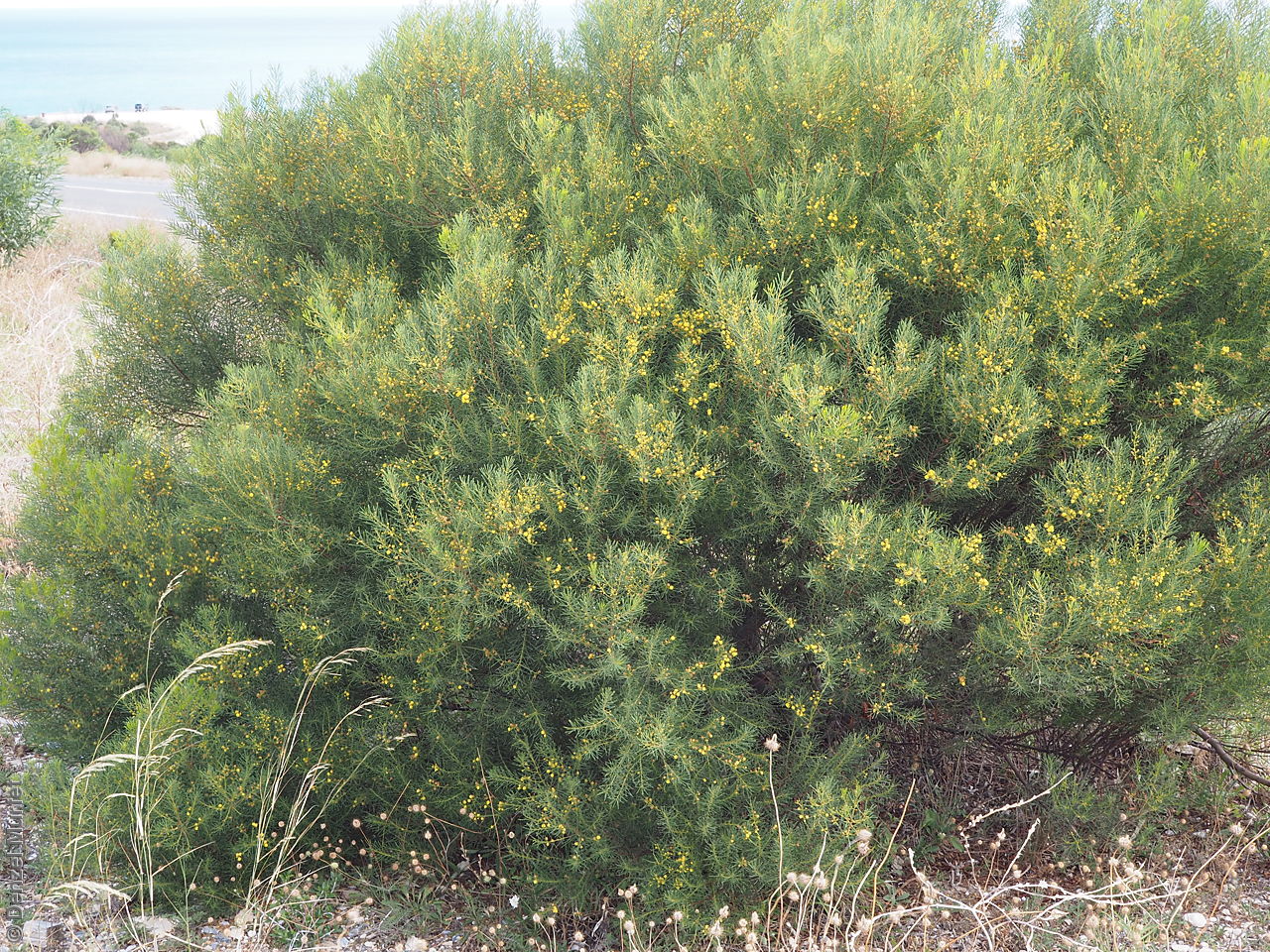
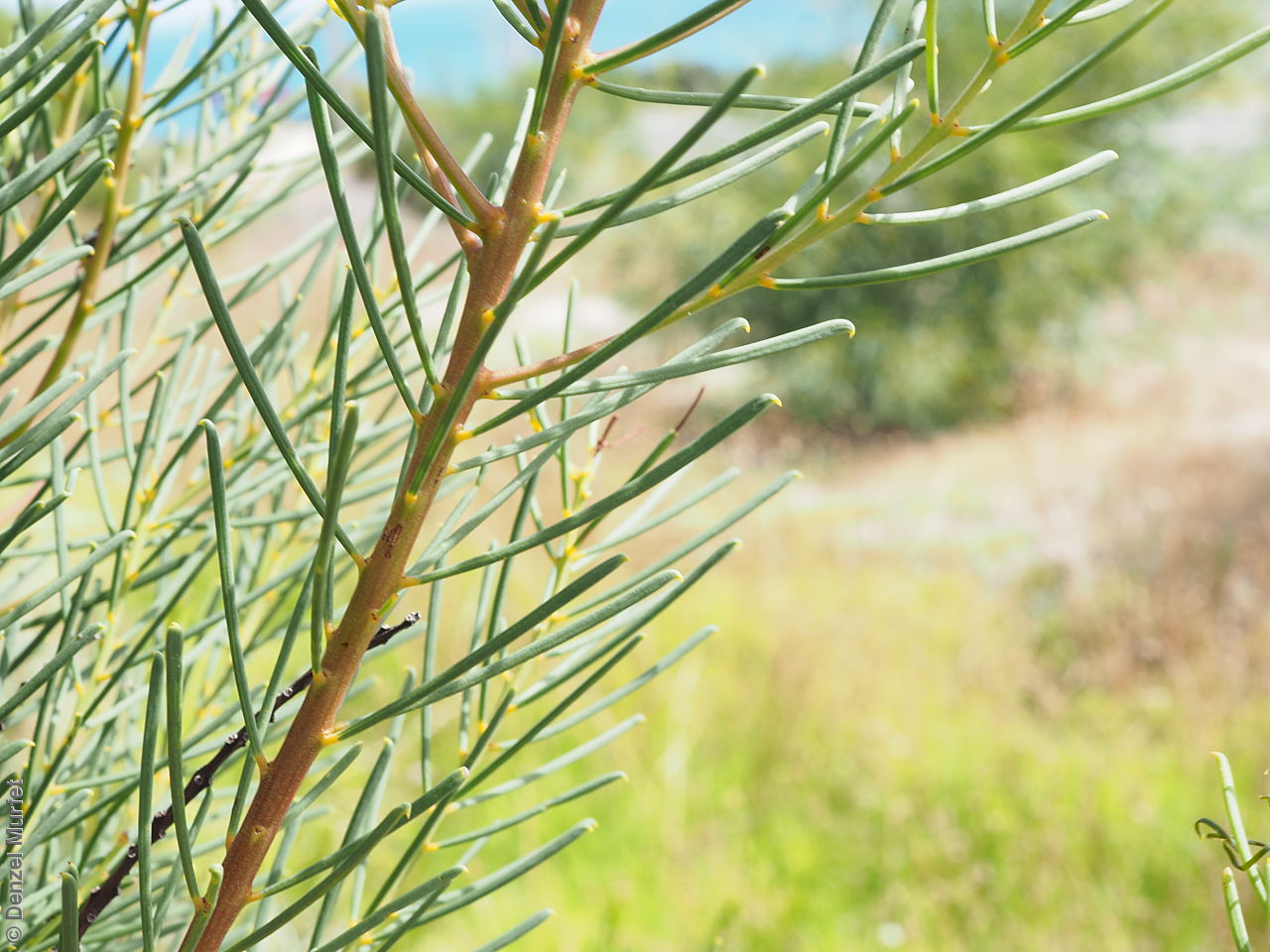
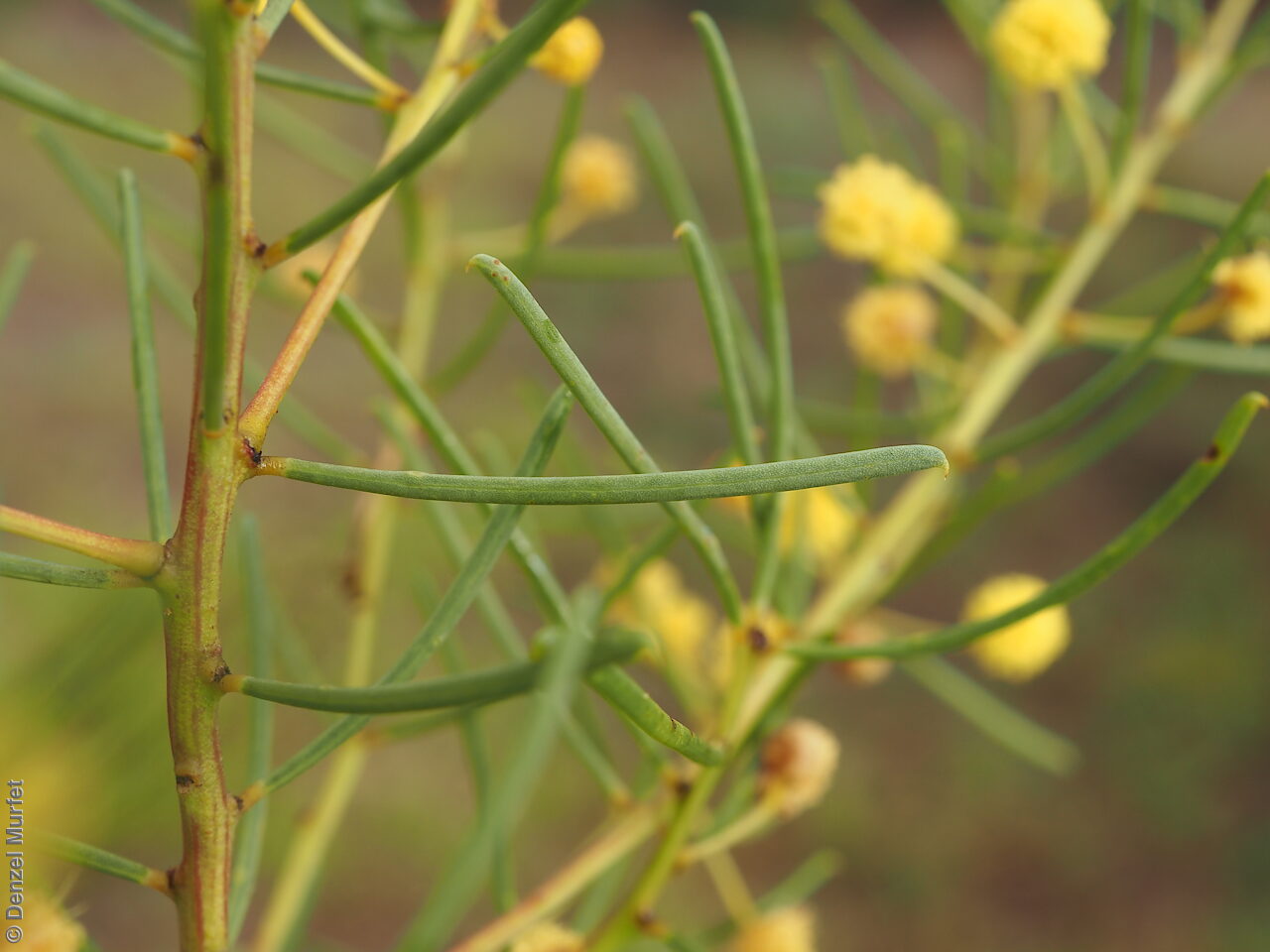
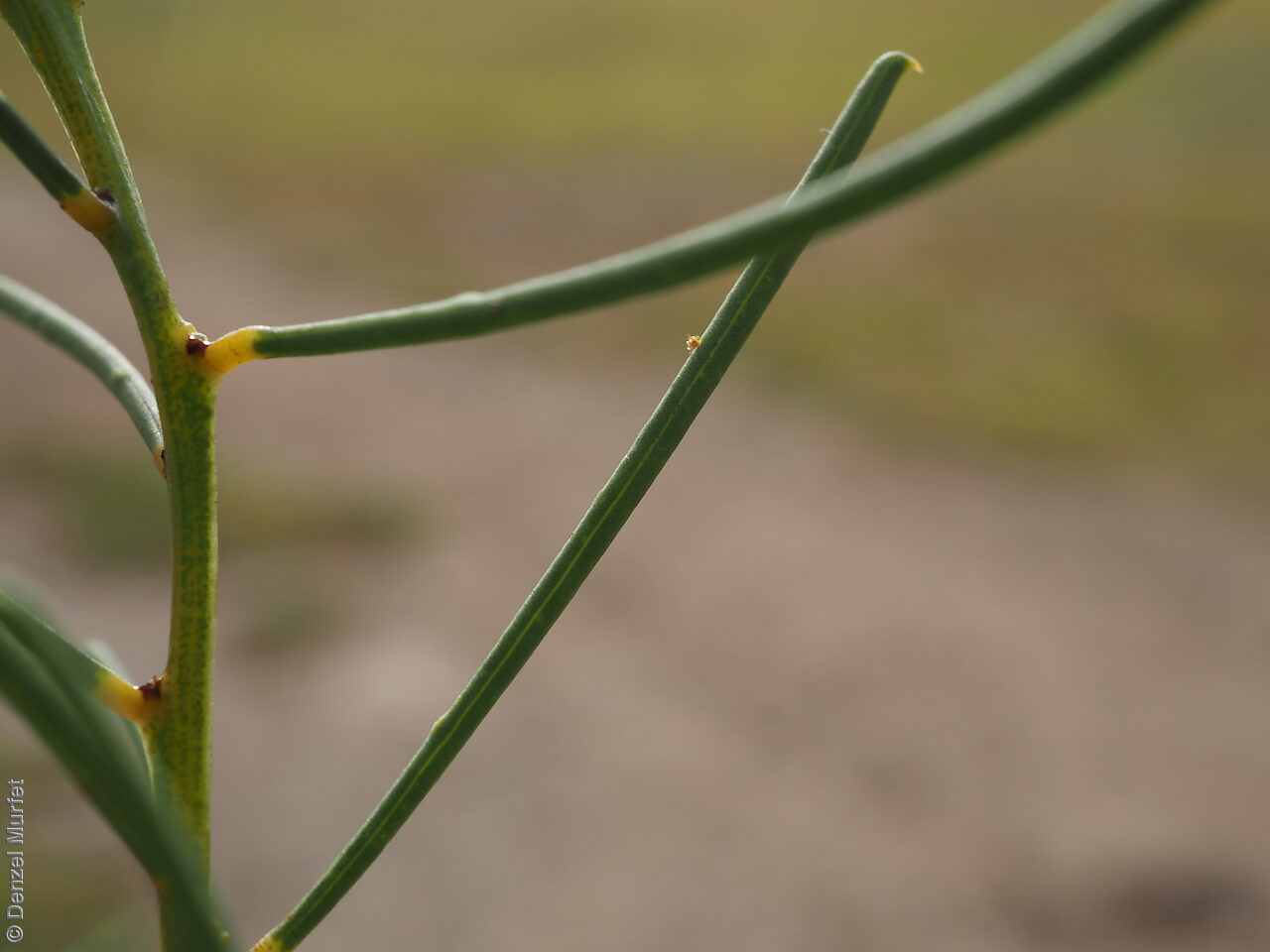

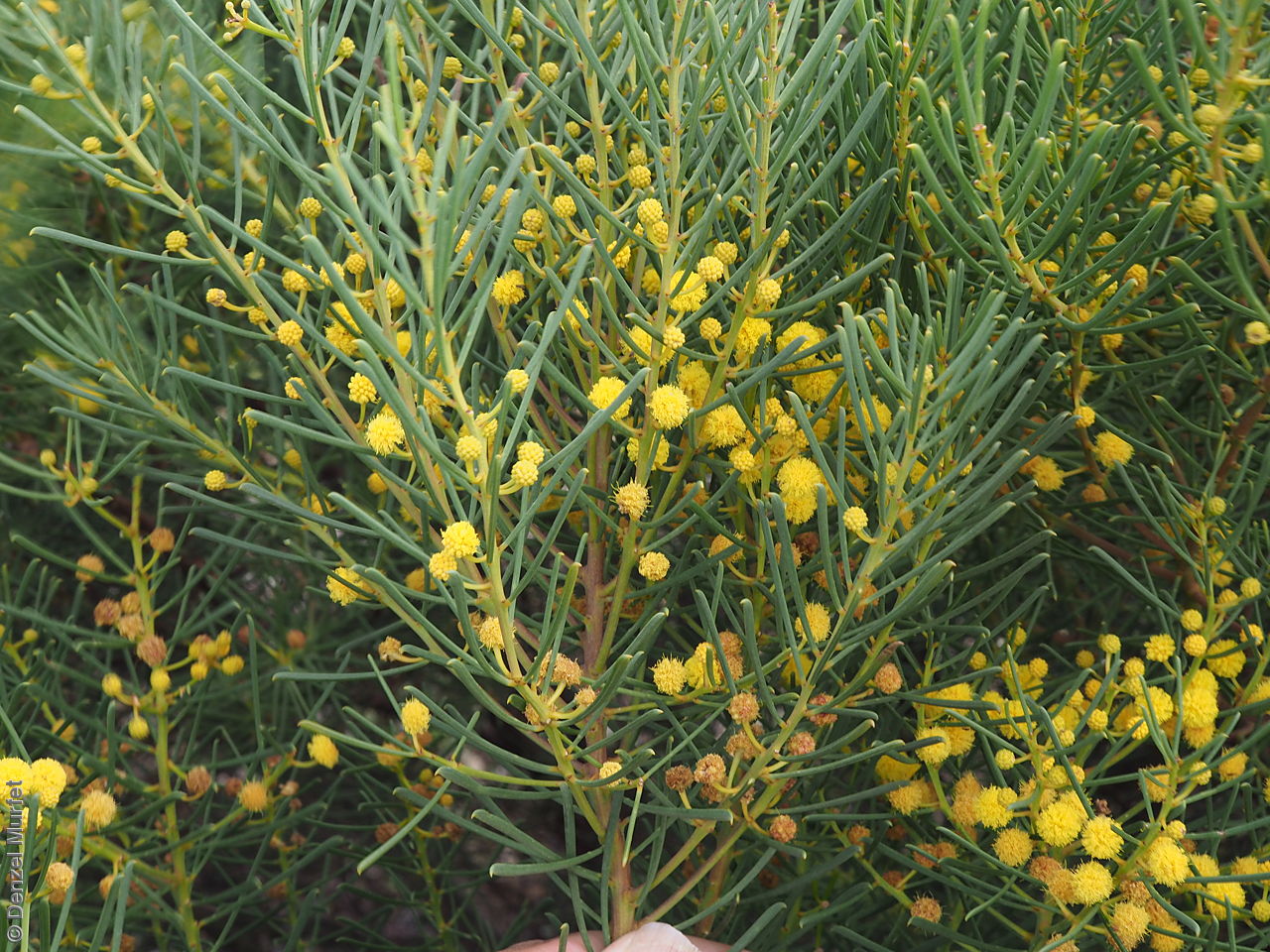
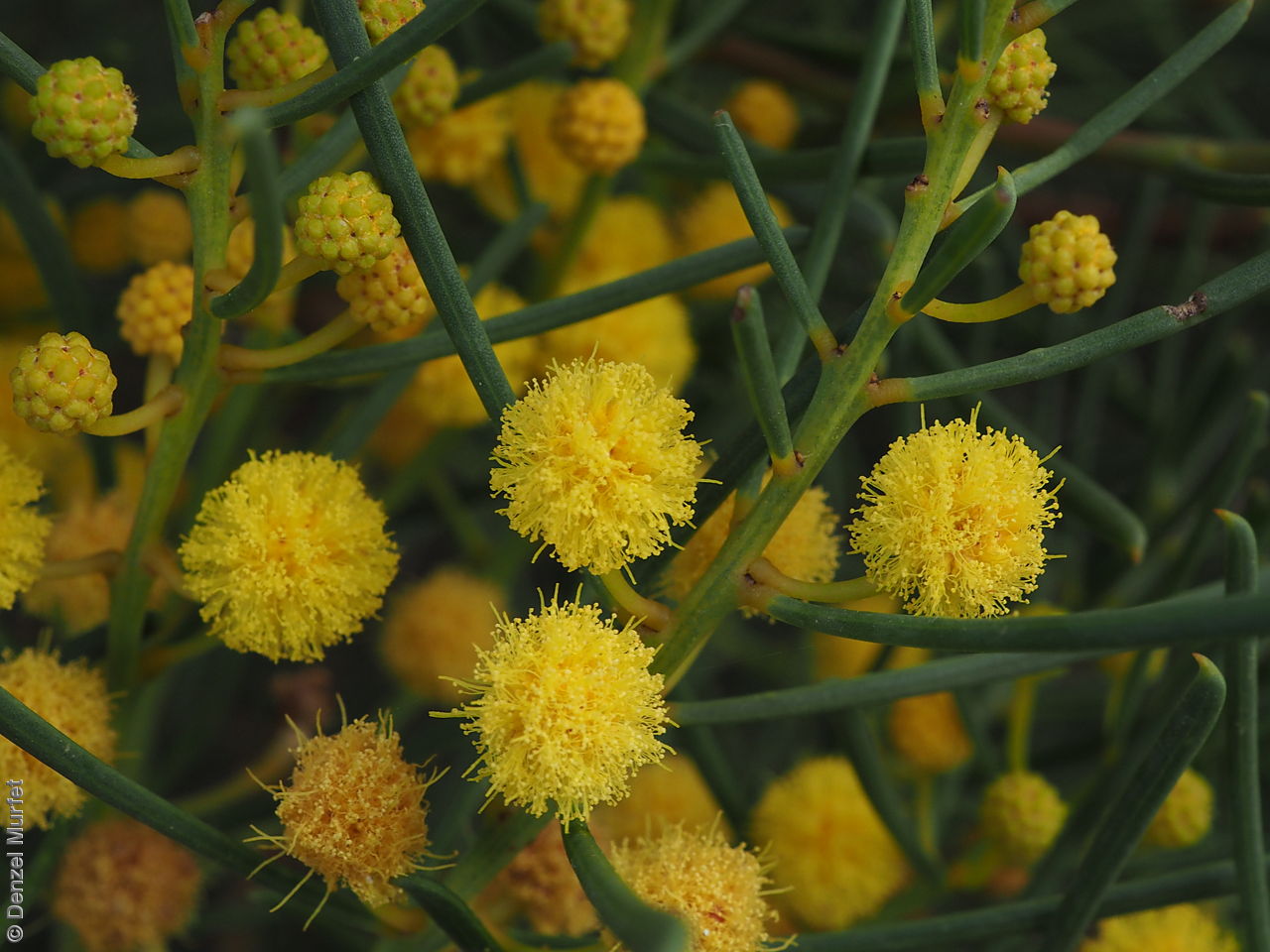
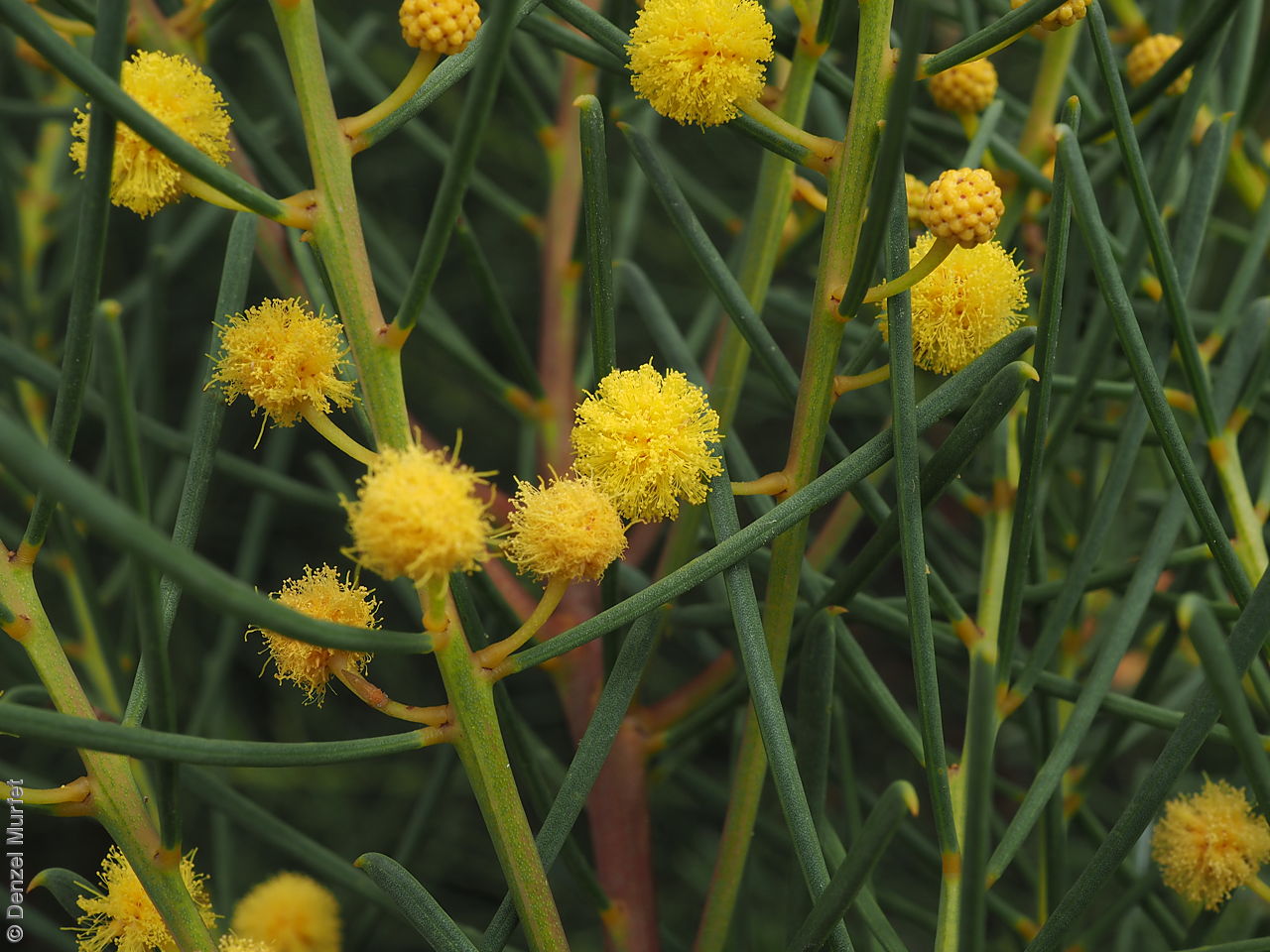
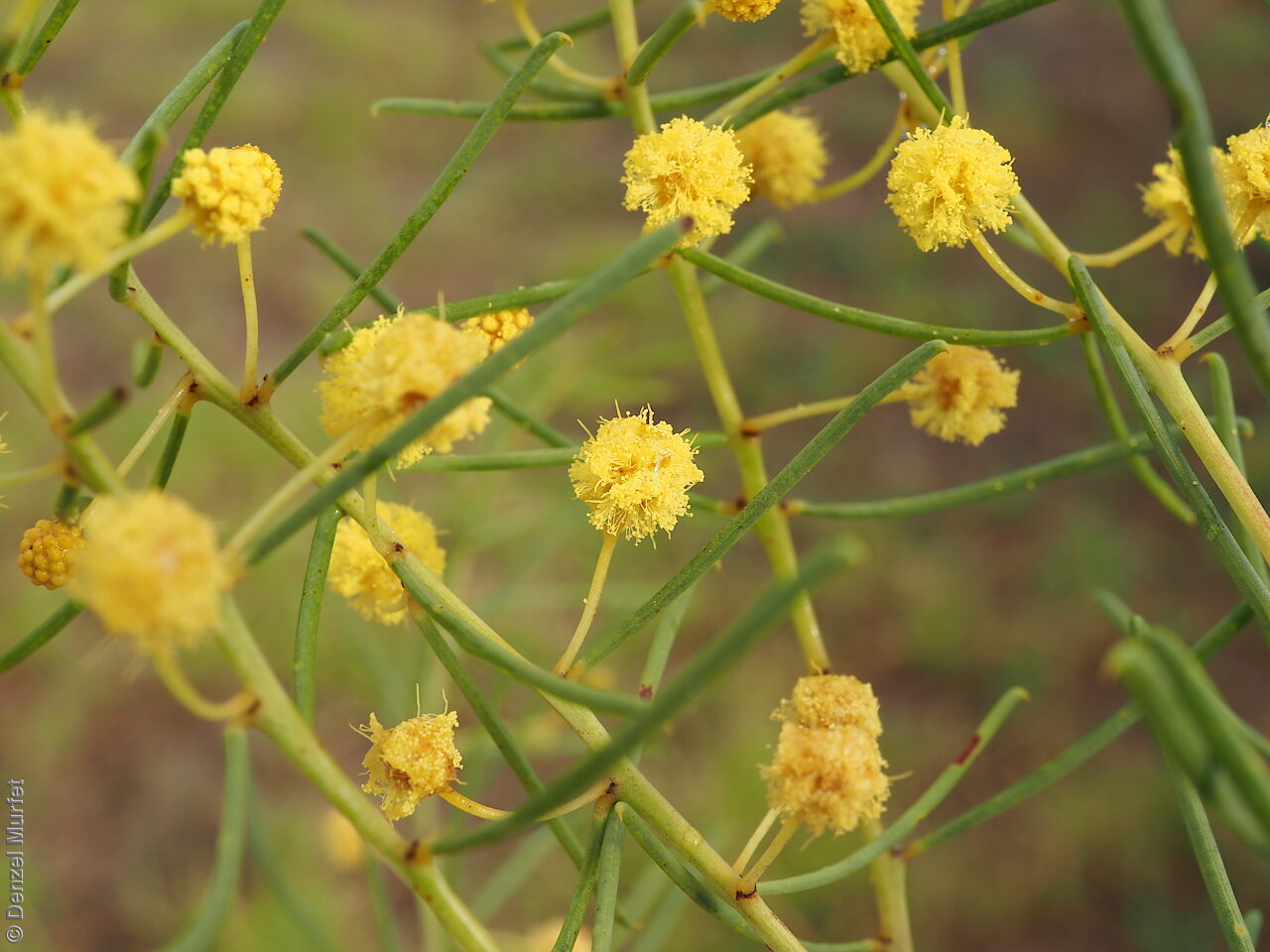
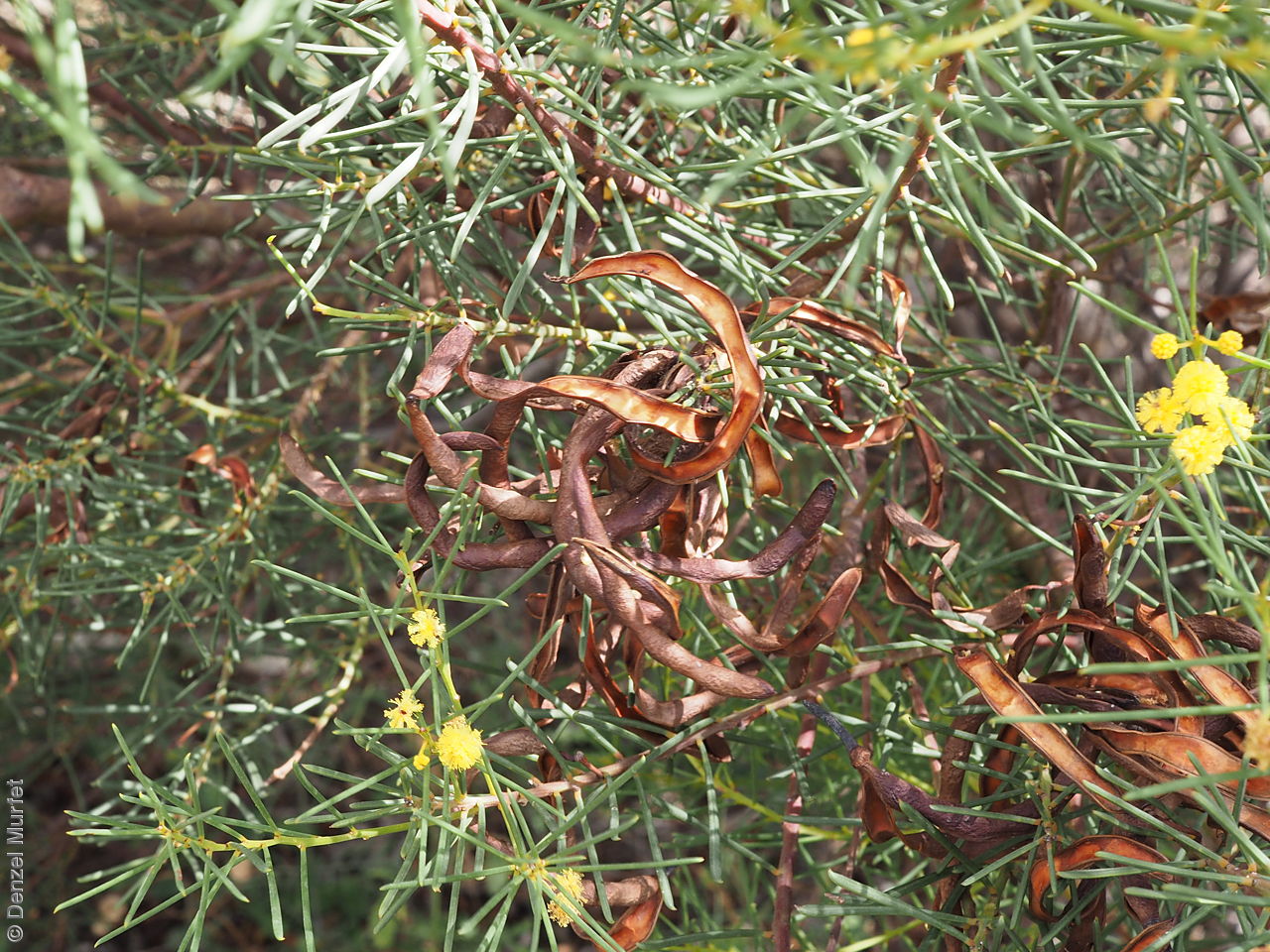
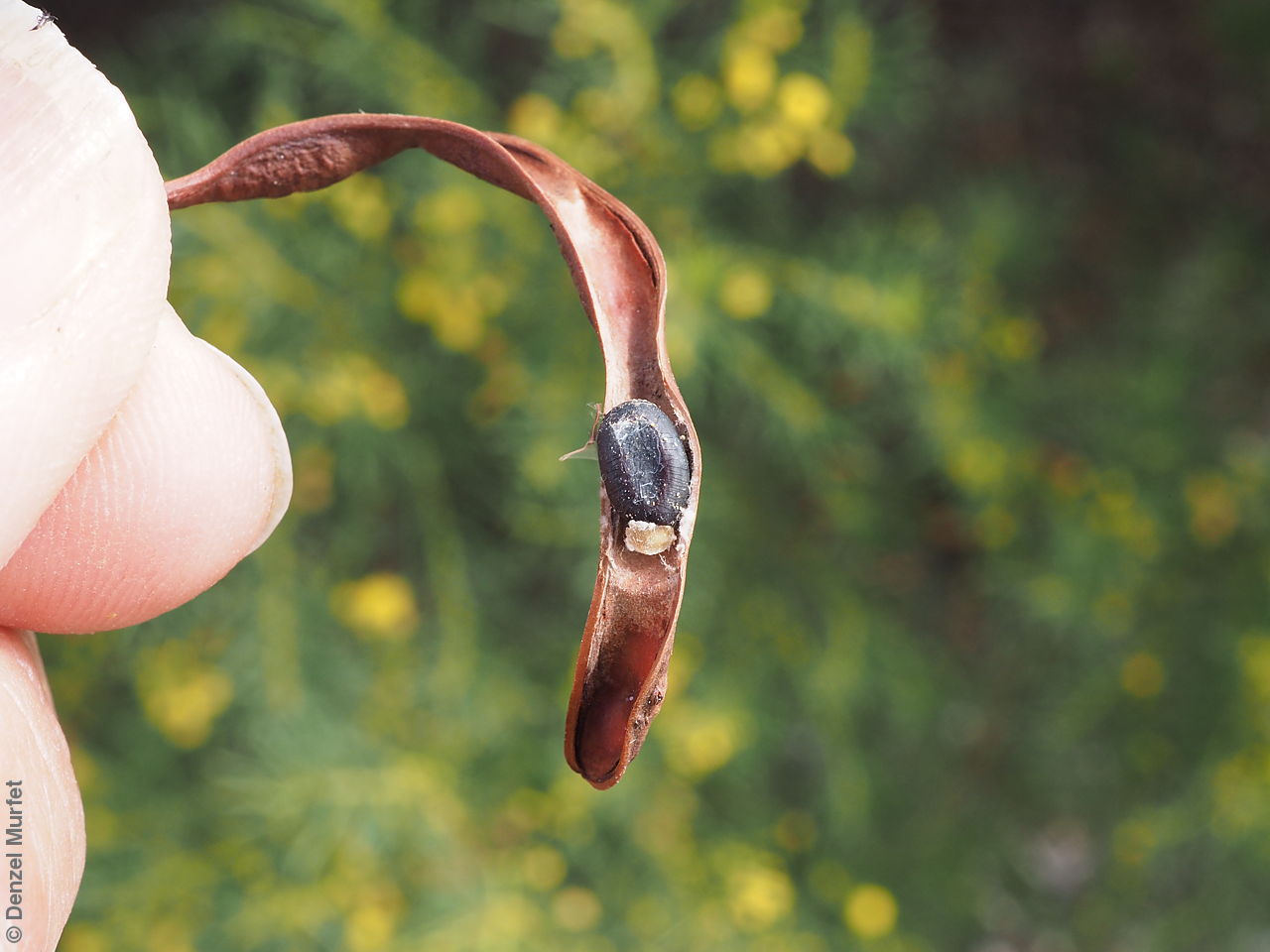
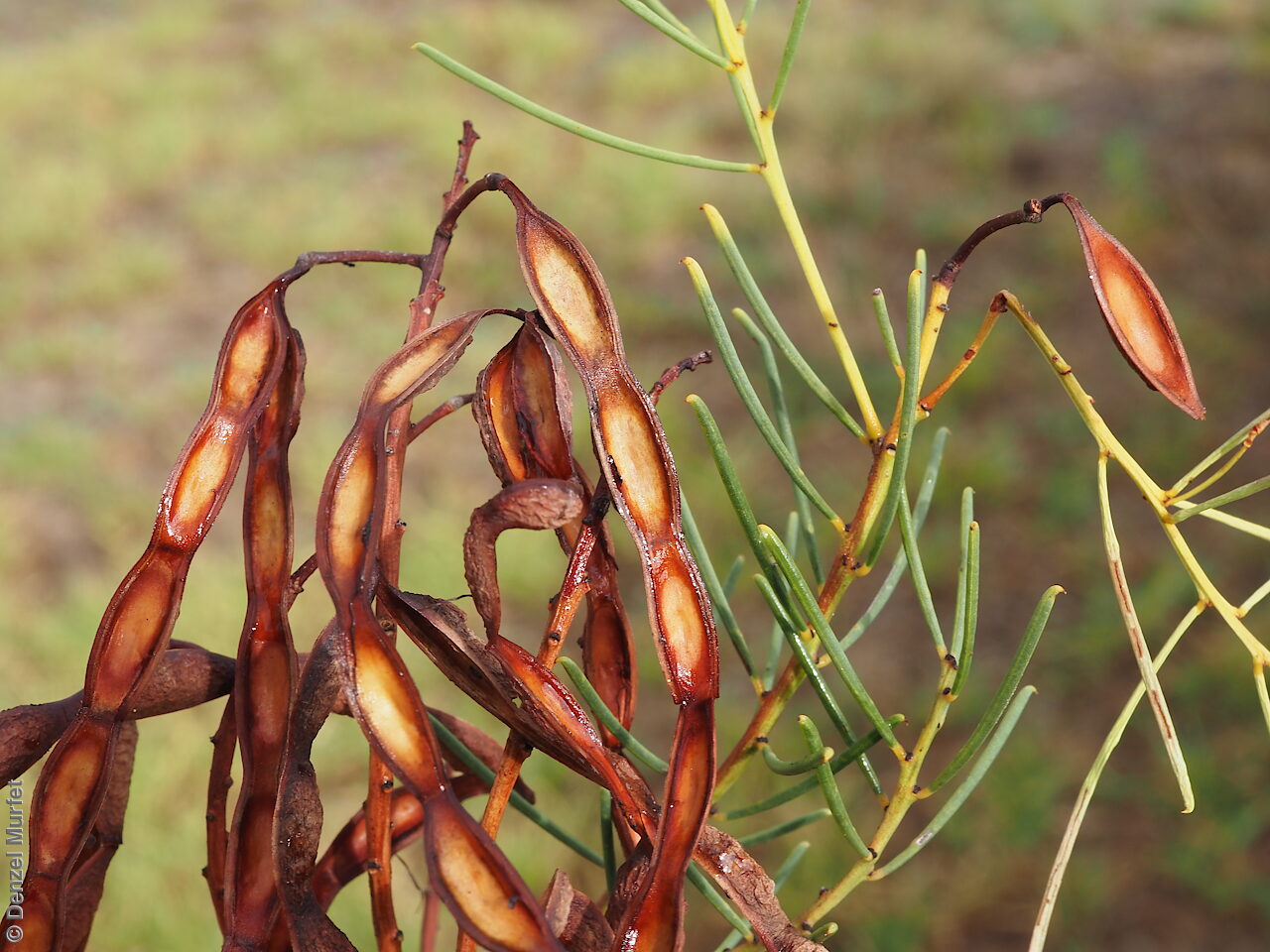
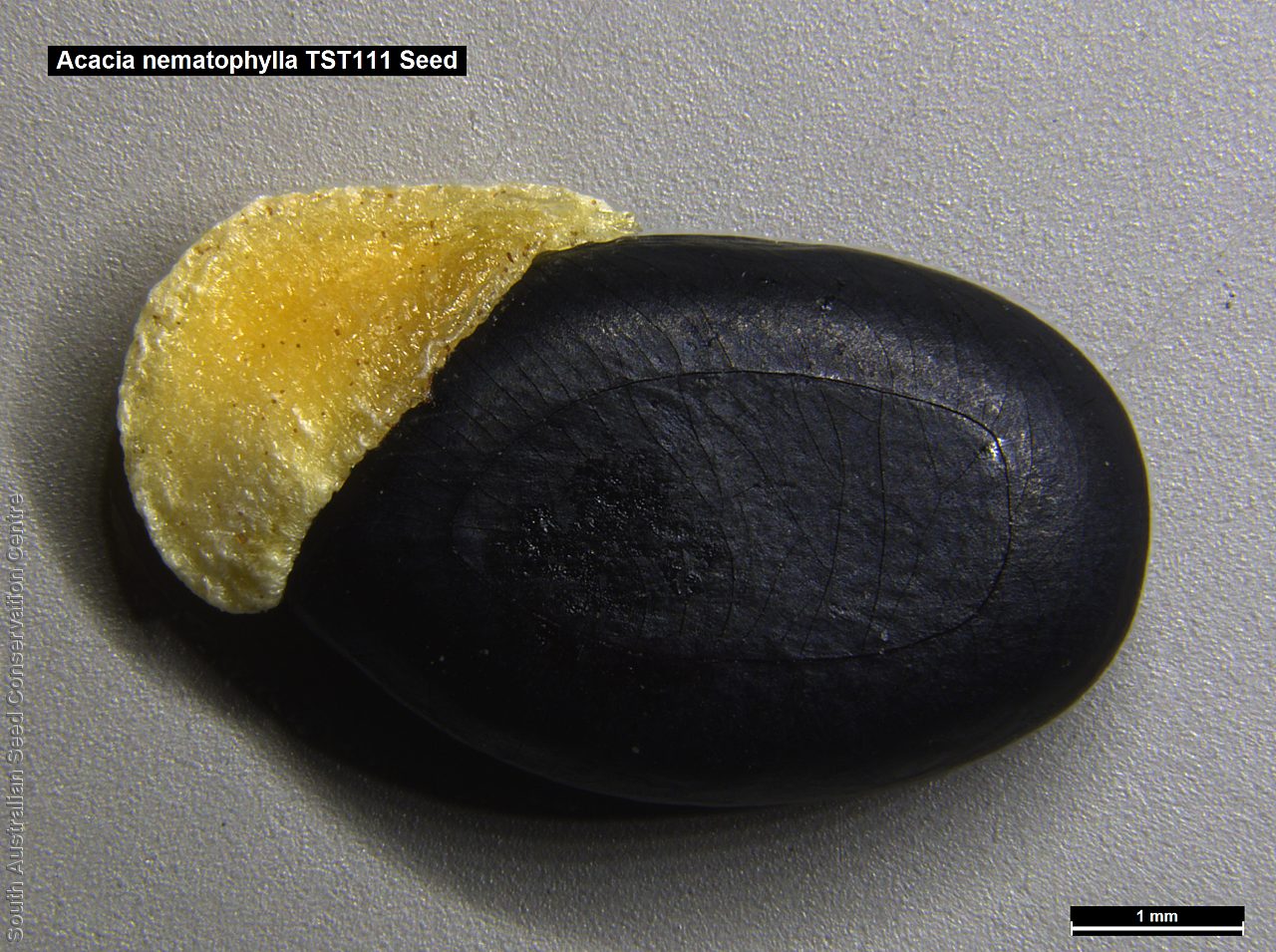
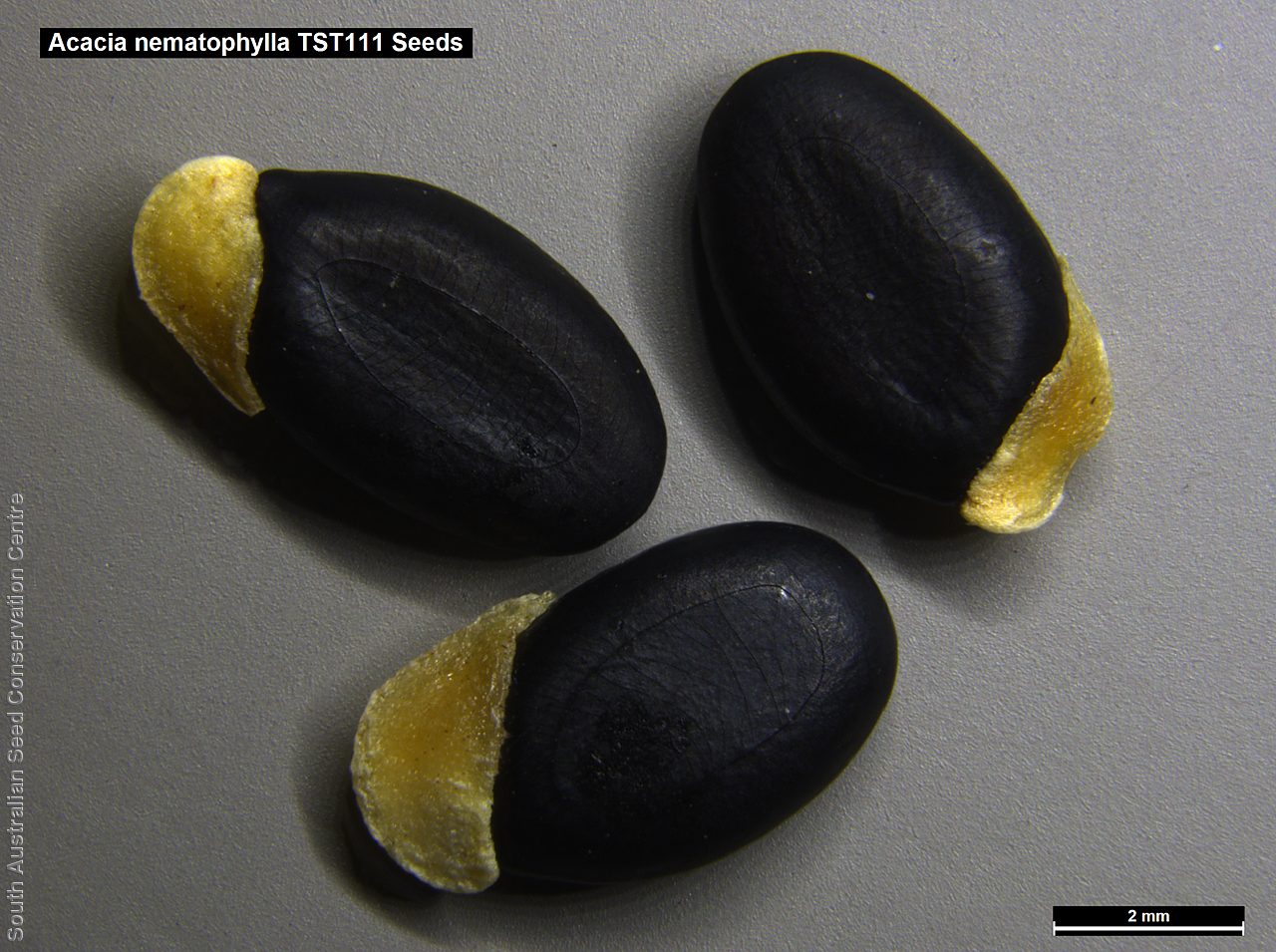

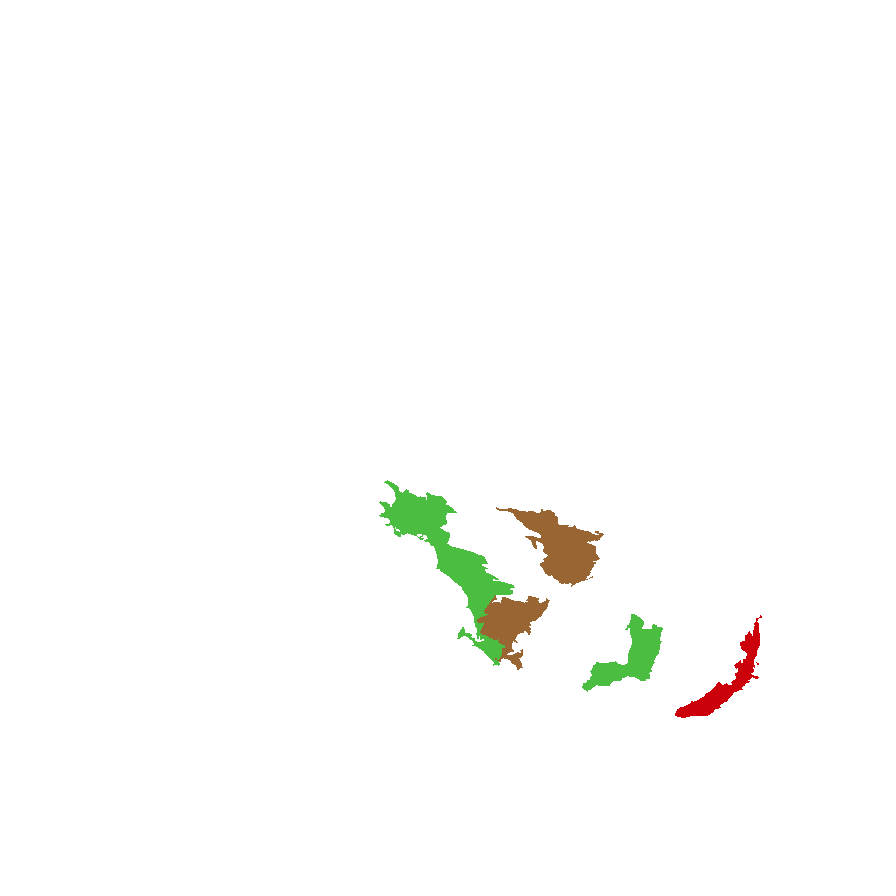
Botanical art
Etymology
Acacia from the Greek 'akakia' and derived from 'ake' or 'akis' meaning a sharp point or thorn and 'akazo' meaning to sharpen. Dioscorides, the Greek physician and botanist used the word in the 1st century AD for the Egyptian thorn tree, Acacia arabica. Nematophylla from the Greek 'nemato' meaning thread-like and 'phyllon' meaning a leaf.
Distribution and status
Endemic to South Australia and found on southern Eyre Peninsula and on Yorke Peninsula with a few records from the Fleurieu Peninsula. Native. Common in South Australia.
Herbarium regions: Eyre Peninsula, Yorke Peninsula, Southern Lofty, Green Adelaide
NRM regions: Adelaide and Mount Lofty Ranges, Eyre Peninsula, Northern and Yorke
AVH map: SA distribution map (external link)
Plant description
Bushy glabrous shrubs to 2.5 m tall with branchlets angled at extremities. Leaves narrowly linear to 40 mm long and 1.5 mm wide, ascending to erect; straight or shallowly curved, slightly hooked; flat or cylindrical, glabrous, grey-green, 4-veined with midrib impressed or raised. Flower-spike of solitary globular yellow flower-heads. Flowering in all months except June, with a peak in summer. Fruits are brown, linear pod to 11 cm long and 6 mm wide, surface raised over seeds and slightly constricted between them, glabrous. Seeds are hard black ellipsoid to ovoid seed to 6 mm along and 4 mm wide. Seed embryo type is investing.
Seed collection and propagation
Collect seeds between November and April. Collect mature pods that are turning brown, with hard, dark seeds inside. Place the pods in a tray and leave to dry for 1-2 weeks or until the pods begin to split. Then rub the dried pods to dislodge the seeds. Use a sieve to separate any unwanted material. Store the seeds with a desiccant such as dried silica beads or dry rice, in an air tight container in a cool and dry place. From one collection, the seed viability was high, at 100%. This species has physical dormancy that needs to be overcome for the seed to germinate (e.g. nicking or softening the seed coat).
| Location | No. of seeds (weight grams) | Number of plants | Date collected | Collection number Collection location | Date stored | % Viability | Storage temperature |
|---|---|---|---|---|---|---|---|
| BGA MSB | 11,150 (196.5 g) 11,150 (196.5 g) | 70 | 30-Nov-2006 | TST111 Yorke Peninsula | 1-Aug-2007 | 100% | -18°C |
Number of plants: This is the number of plants from which the seeds were collected.
Collection location: The Herbarium of South Australia's region name.
% Viability: Percentage of filled healthy seeds determined by a cut test or x-ray.